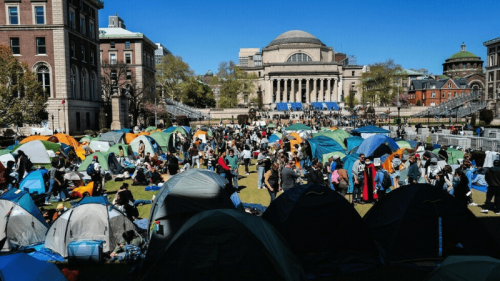ISLAMABAD: Pakistan is the second worst country in the world in terms of gender parity, ranking 148 out of 149 countries in the ‘Global Gender Gap Index 2018’ report released by the World Economic Forum (WEF) on Tuesday.
According to the report, four Muslim countries — Egypt, Saudi Arabia, Yemen, and Pakistan — are the four worst-performers in the world where the number of women holding managerial positions is the lowest.
Also read: Women must wait 217 years to earn the same as men, index says
Categorised as the lowest-ranked country in South Asia, Pakistan closed 55 per cent of its overall gender gap as compared to Bangladesh and Sri Lanka which were the top-ranked countries in the region, having closed just over 72pc and nearly 68pc of their overall gender gap, respectively.
The Geneva-based organisation’s annual report tracked disparities between the genders in 149 countries across four areas: education, health, economic opportunity and political empowerment.
Pakistan’s scorecard showed that in terms of economic participation and opportunity, it ranked 146th, while in health and survival, its rank was 145. In terms of political empowerment, the country was positioned at 97. Pakistan’s population was growing at the rate of 1.93pc per annum, the report pointed out.
Report indicates it will take centuries to achieve gender parity in workplaces around the globe
Pakistan made some good progress this year in wage equality as well as on the educational attainment sub-index. However, this progress was insufficiently rapid to avoid the country being overtaken by a number of faster-improving countries at the lower end of the index’s global rankings, the report added.
After years of advances in education, health, and political representation, women registered setbacks in all three areas this year, the WEF said. Only in the area of economic opportunity did the gender gap narrow somewhat, although there was not much to celebrate, with the global wage gap narrowing to nearly 51pc, it added. To date, said the WEF, there was still a 32pc average gender gap that remained to be closed.
It highlighted that factors such as stagnation in the proportion of women in the workplace and women’s declining representation in politics, coupled with greater inequality in access to health and education, offset improvements in wage equality and the number of women in professional positions, left the global gender gap only slightly reduced in 2018.
The report showed that there were now proportionately fewer women than men participating in the workforce, suggesting that automation was having a disproportionate impact on jobs traditionally performed by women.
Women, WEF observed, were significantly under-represented in growing areas of employment that require science, technology, engineering and mathematics skills. It decried the particularly low participation of women within the artificial intelligence field, where they made up just 22pc of the workforce.
Projecting current trends into the future, it added that the overall global gender gap would close in 108 years across the 106 countries covered since the first edition of the report. It said that the most challenging gender gaps to close were the economic and political empowerment dimensions, which would take 202 and 107 years to close, respectively.
Across the 149 countries assessed by the report, there were just 17 that currently had women as heads of state, while on average just 18pc of ministers and 24pc of parliamentarians globally were women.
Similarly, women held just 34pc of managerial positions across the countries where data was available, and less than 7pc in the in the four worst-performing countries — Egypt, Saudi Arabia, Yemen, and Pakistan.
With an average remaining gender gap of 34.2pc, South Asia was the second-lowest scoring region on this year’s Global Gender Gap Index, ahead of the Middle East and North Africa and behind Sub-Saharan Africa.
With the exception of Bangladesh and Pakistan at either end of South Asia’s regional table, gender parity outcomes were somewhat homogeneous across the region. The difference in gender gap size between the highest-ranked and lowest-ranked countries in the region was about 10pc for the educational attainment sub-index and about 4pc for health and survival.
On political empowerment, one country — Bangladesh — reached a level of gender parity of more than 50pc, while India had closed nearly 40pc of its gender gap on this sub-index. The region’s remaining countries had yet to achieve a gender parity level of at least 20pc, the report said.
It is worth noting that, from a low base, South Asia had made the fastest progress on closing its gender gap of any world region over the past decade. In terms of year-on-year progress, out of the seven countries from the region covered by the index this year, four countries increased their overall scores compared to last year, while three had decreased their overall scores.
Published in Dawn, December 19th, 2018















































